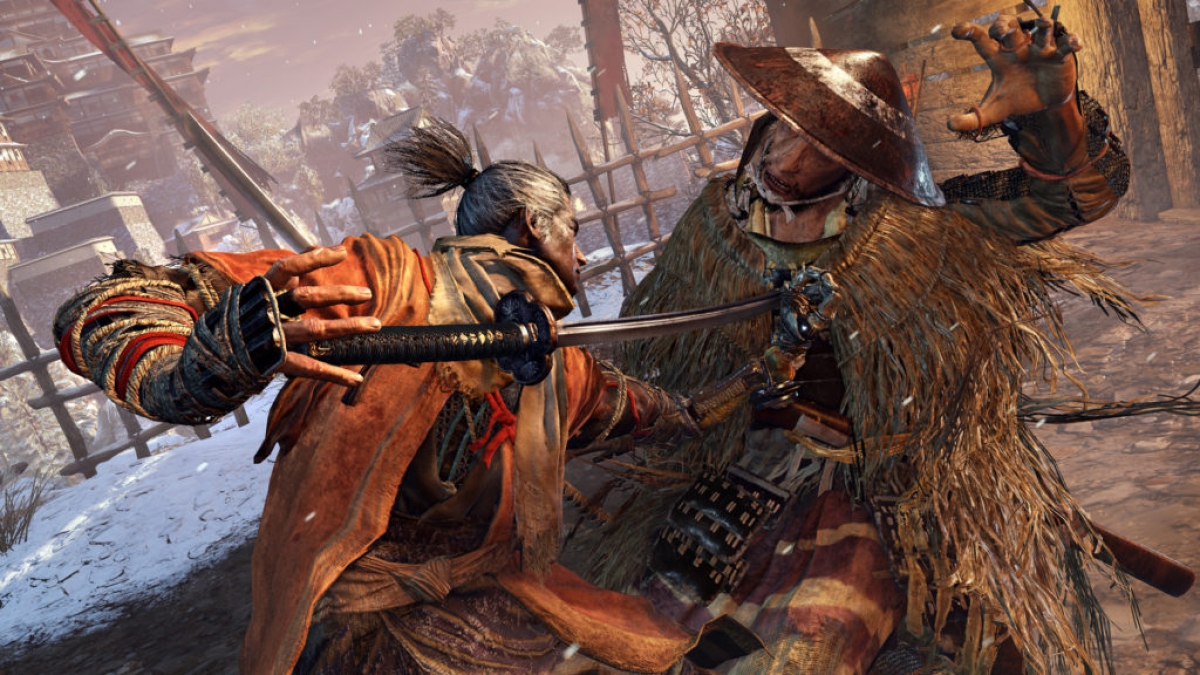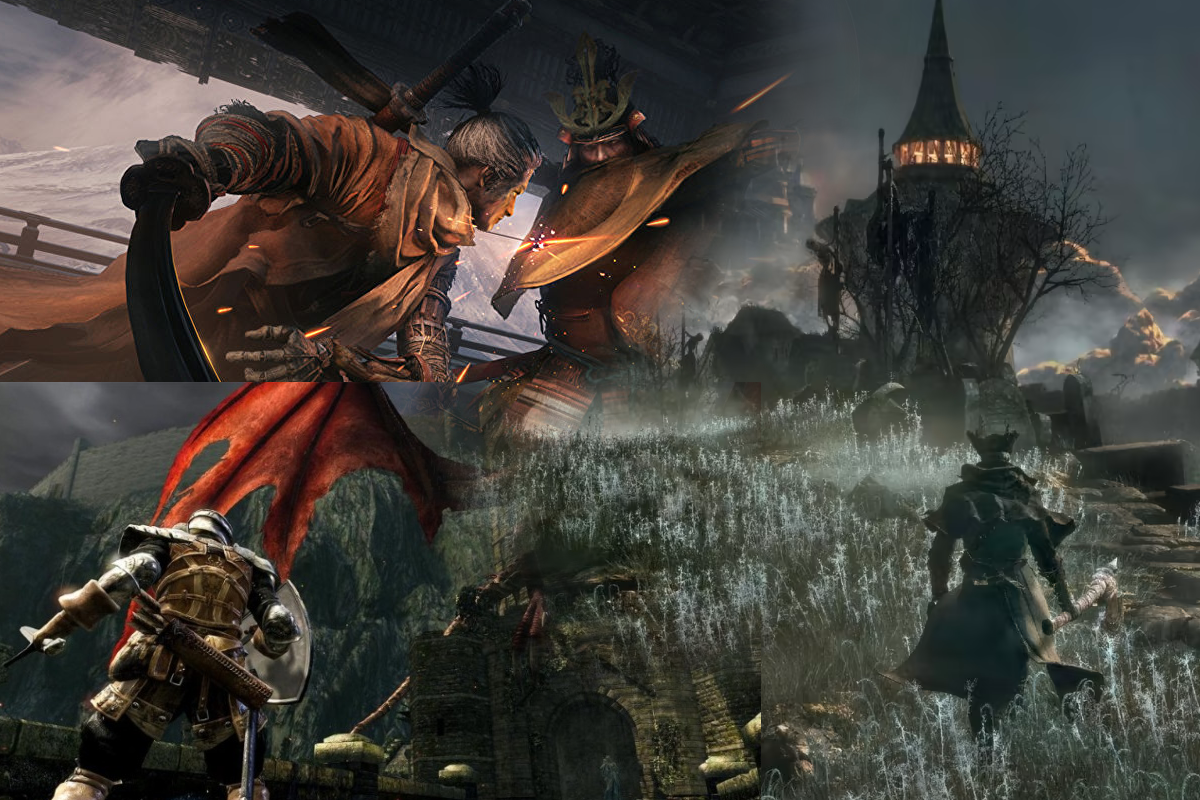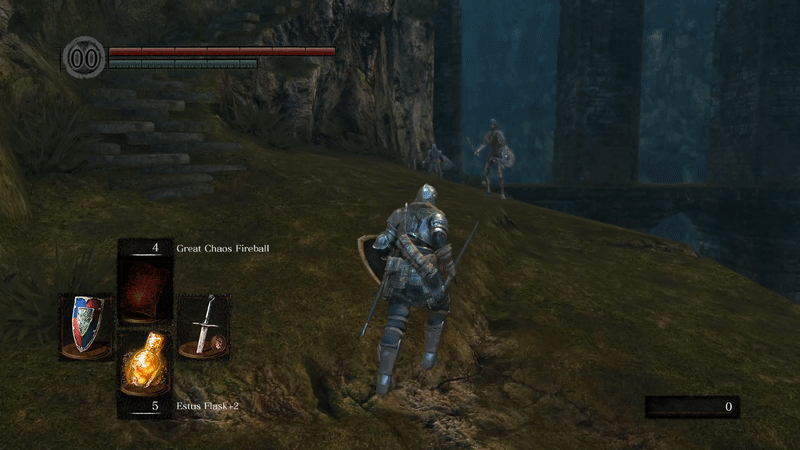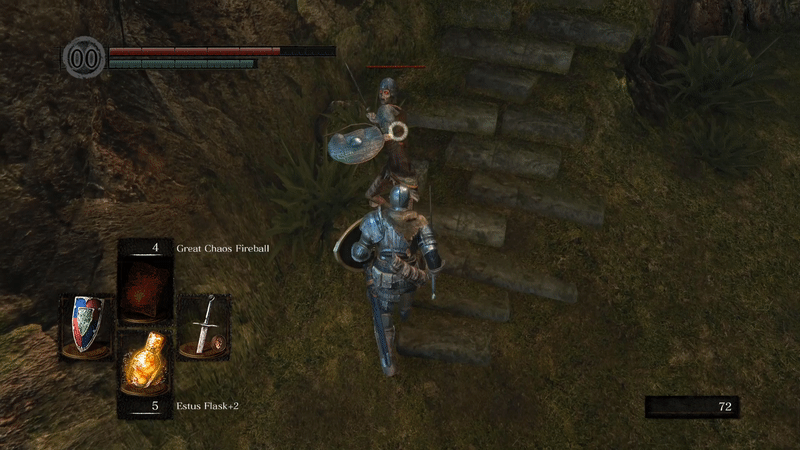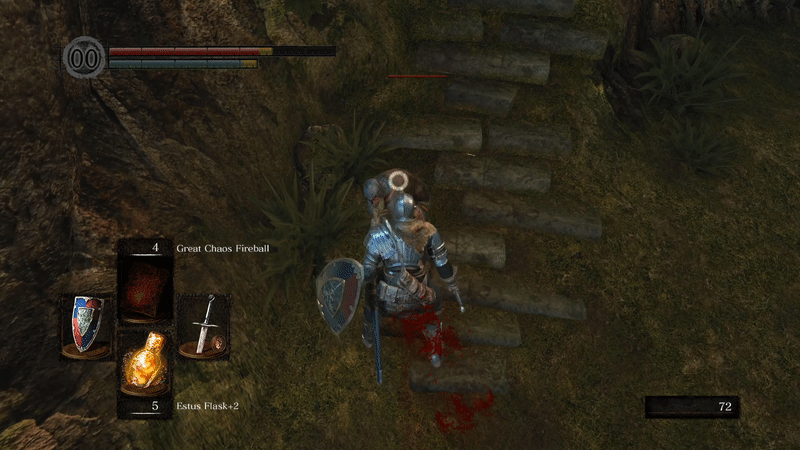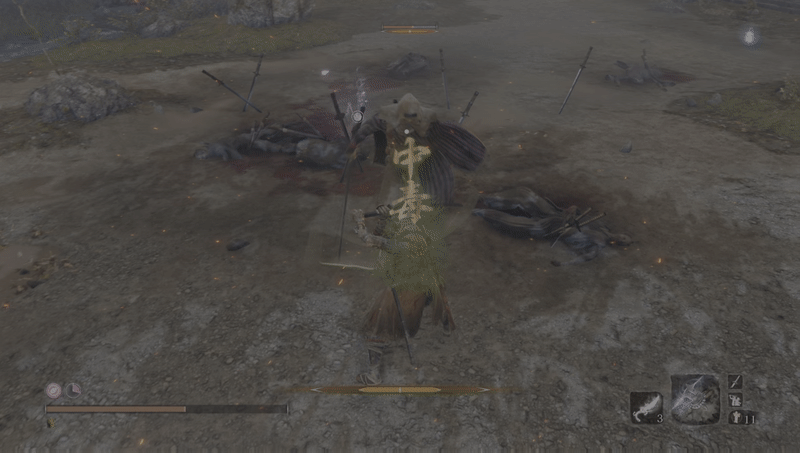Talking about Sekiro again. Sekiro is a ninja action game by FromSoftware, that involves a lot of sneaking around and backstabbing, but nearly as much sword-to-sword clashing and front-stabbing as well!
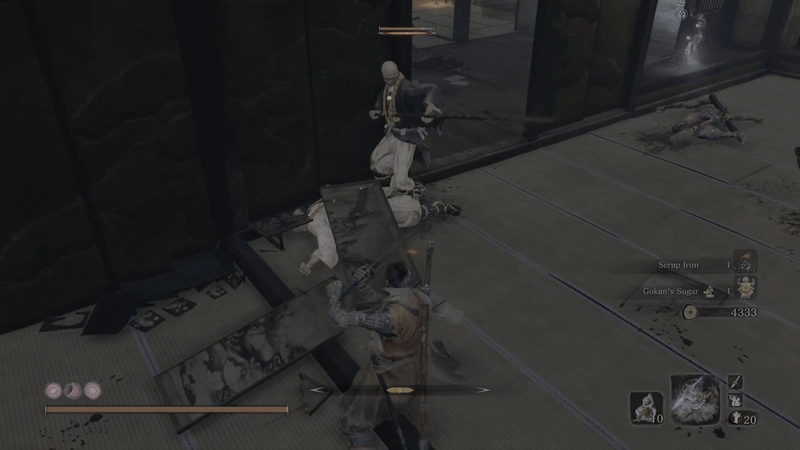
Verisimilitude! A big word, and one of my favorite ‘game-designerisms’. What exactly does it mean? So if realism is invocation of the real, of reality upon your fiction, verisimilitude in the context of game design is the invocation of what seems real, or rather feels right to give the impression of reality. That distinction might seem fuzzy, but it’s very important. What makes a game realistic is an adherence to the facts of the subject you are simulating, from an objective standpoint. What gives a game strong verisimilitude is a respect for the experience of what you’re trying to depict. In the latter case, it is more important that the gameplay feels right than it is for the game to be objectively close to reality. A horse’s hooves are expected to make a certain sound in television and movies, but this sound is often expected to be the sound of clapping coconut shells, instilled in audiences after many years of the sound effect’s prominence in television and movies. As you can see, creating a fulfilling sense of verisimilitude involves a complex balance of player expectations and affordances. This becomes even more complex, as these things tend to be, when you involve the dimension of interactivity. In Sekiro, I want to talk specifically about the verisimilitude of the game’s sword fighting.
I think one of the things I respect most about Sekiro: Shadows Die Twice is the design’s willingness to reevaluate even the most fundamental assumptions of action games. The health bar, for one, is ubiquitous in such games. But, if you think about it, ‘health’ as a gameplay mechanic is a little weird, right? There is an arbitrary number representing your opponent’s closeness to death. Maybe the enemy will pull out some stronger ‘desperation moves’ when their health gets low, but so long as it isn’t zero, they can fight as well as they ever have. When that last HP or ‘hit point’ is depleted though, POOF! Their body’s ability to sustain its own weight goes up in smoke and they crumple like their bones have suddenly turned to sawdust. The HP mechanic exists for a reason, it works well. The suspension of disbelief needed to accept this abstraction of how fighting capability works is easy enough to achieve such that most players will not question it, in return for the fun gameplay that HP pools provide. Sekiro wants to go a step further though, and bring the abstraction of their combat closer to a cinematic realization of an idealized sword fight.
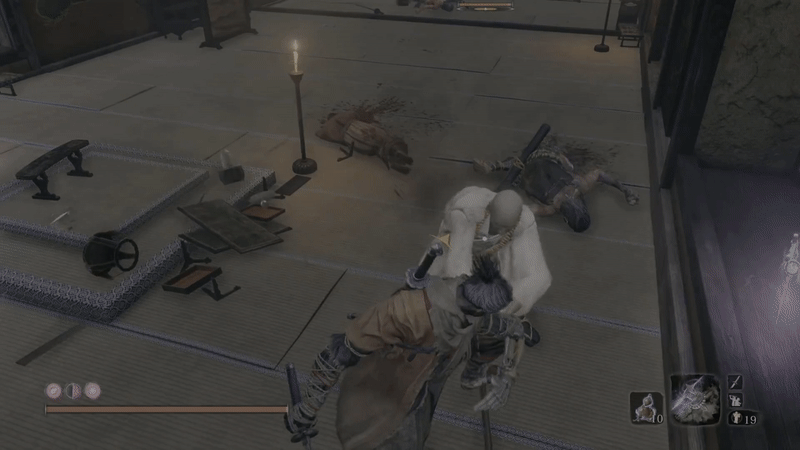
In reality, a sword fight does not involve two guys hitting each other back and forth until one guy runs out of hit points and collapses. Really, it’s closer to the first guy to land a clean hit… has probably just killed his opponent. So Sekiro has created a system that abstracts this reality – Sekiro is not generally a game about cutting opponents over and over again until you’ve punched out all of their blood, but rather, you strike at opponents as they deflect your blows until you can land a clean hit, killing them instantly. This makes a lot of sense. In a real fight, wearing down your opponents’ defenses, finding ways around their guard, is paramount. Most opponents are not going to just stand there and let you stab them with a sword. The idea Sekiro proposes is that ‘hit points’ are secondary to ‘posture’, or the strength of one’s defenses.

Posture in Sekiro can be reduced by striking an opponent’s guard to rattle their stance, deflecting their attacks with a well-timed parry, or participating in a number of other contextual maneuvers such as the mikiri counter, a special counter against thrusting attacks, or jumping over enemy sweeping attacks. Posture naturally regenerates over time, and the player or enemy combatants can quickly restore it by holding their position and guard. When posture is completely gone, enemies become vulnerable to a deathblow, which will kill them instantly, while the player becomes stunned if their posture is gone, forcing them to dodge or take a hit. The idea of becoming too tired or psyched-out to defend myself in a tense situation due to relentless pressure from my opponent is much more relatable to me than suddenly exploding into red mist and collectible coins because I was punched one too many times. I am able to, through this system, put a bit of myself in the battle. Feeling my defenses wear down is something I have really experienced, in real life, so that feeling of the real draws me further into the game through Sekiro‘s clever abstraction of the concept.
Deathblows becomes the real hinging point of combat in Sekiro. As I said, whenever an enemy’s posture is depleted, they become vulnerable to the instant-killing deathblow. I say instant-killing, but some enemies can endure two or even three deathblows before really dying. Sekiro takes places in a fictionalized and fantasy-tinged realization of 16th century japan, with inhuman warriors, monsters, and demons, so the idea that a giant ogre-man can survive two ‘clean hits’ before he goes down for good does nothing to hurt the verisimilitude in my estimation. It’s not realistic, but it still feels right. The thought that even the strongest demigod opponents you face can be brought down by just two or three true strikes really grounds the world in a sense of grit and lethality. The illusion is given that life in Sekiro is nearly as fragile as it is in reality, even with divine powers. These ‘deathblow counters’ work brilliantly with Sekiro‘s stealth mechanics as well, as one needs only sneak up on an opponent to get a free deathblow, no risky one-on-one fighting required. The two systems work so well together that I feel I could write an entire article just about that, so I’ll move on for now.

Now hit points still exist in Sekiro, but their role has been shifted somewhat. Enemies will still die if their HP reaches zero, though this is much less likely to occur than their posture reaching zero. That’s not to say wearing down your opponent’s HP is pointless. The lower a combatant’s HP is, the slower their posture can regenerate. Now if HP is still meant to represent ‘health’, then this makes a lot of sense. A clean hit is likely to just kill someone in a sword fight, but a series of glancing blows are very likely to make someone less able to defend themselves. Cuts, bruises, a broken finger or two, such things would definitely add up to a poorer and poorer defense, and so this adds to the overall sense of internal consistency in Sekiro‘s combat. No matter the true reality, fighting in Sekiro creates an experience that meets the player’s imagination of how being a sword-fighting ninja would actually work. This level of gradient to the effects of losing HP, where the more injured a combatant, the worse they can defend themselves, addresses much of the inherent weirdness of HP I mentioned earlier, and it does it in such a simple, smart fashion.
Verisimilitude is all well and good, but I wanted to quickly go over some other practical advantages of this system. Since posture is an ever-shifting and renewable resource, it creates a very dynamic tension that can shift back and forth freely as the situation demands. Empowering reversals of fortune on the part of the player are common, as posture greatly rewards consistent performance, making a win when you’re on the ropes a lot more feasible than you might expect. Posture also allows many little tweaks and knobs for the designers to create a great variety of enemy fighting styles based on their posture stats alone. Maybe one boss restores their posture absurdly quickly, but doesn’t have huge stores of it, meaning this boss must only be parried a few times, but they cannot be given the downtime to recover. Maybe another boss has huge stores of posture, but recovers it very slowly. Some enemies might recover posture quickly, but lose this advantage if they’re even a little injured. Etc. There are a huge number of possible variations of these, and Sekiro implements pretty much all of them.

Obviously glowing praise is my default position for much of Sekiro‘s systems, but it’s worth mentioning some drawbacks. Sekiro‘s posture system works specifically because of how intense a game it is. It demands constant, focused attention of players in a way that may not be appropriate for every game experience. It’s very much ‘Sekiro‘ but every action game may not benefit from such high levels of gameplay intensity so consistently, and so the posture system isn’t a one-size-fits-all solution that can be injected into every action game without adaptation considerations or consequences. I would like to see more systems like the posture system see popularity, but it is a very delicately balanced system that would demand a lot of care in the implementation. Just plain old HP is much simpler, and it’s been the de facto way to represent combat in so many games for so long for a reason. As I’ve said before, the level of abstraction it creates can be an acceptable tradeoff if it’s supported by a strong combat system, and the simplicity of it fits your game. Another aspect of Sekiro‘s posture system is not only the gameplay intensity, but the intensity on the player’s hand in controlling the thing. The system demands a lot of very rapid and often repetitive inputs that may not be suited for all players. It’s an obvious drawback, perhaps not inherent to a posture system, but correlated to how it’s implemented, and so the system would likely need some fundamental changes and re-tuning to map to a more inclusive suite of control options.
I think the posture system is a great look at how we can rethink the traditionally established rules of how games need to be. Creating new and exciting interactive experiences means being willing to accept that no one game mechanic can be sacred, even if it is ubiquitous. HP bars are so universally standard that any deviation from that mold feels almost alien. The posture system picks apart what HP is meant to represent and repackages it in a way that is extremely conducive to the kind of ninja-action experience Sekiro aims to create, in a way that is evocative of the real, even if it is still very abstract. Sekiro‘s posture system isn’t purely realistic, it’s not what sword combat actually looks like, but it feels very real to experience. It feels like pitched life-or-death battle with high stakes, and real tension.
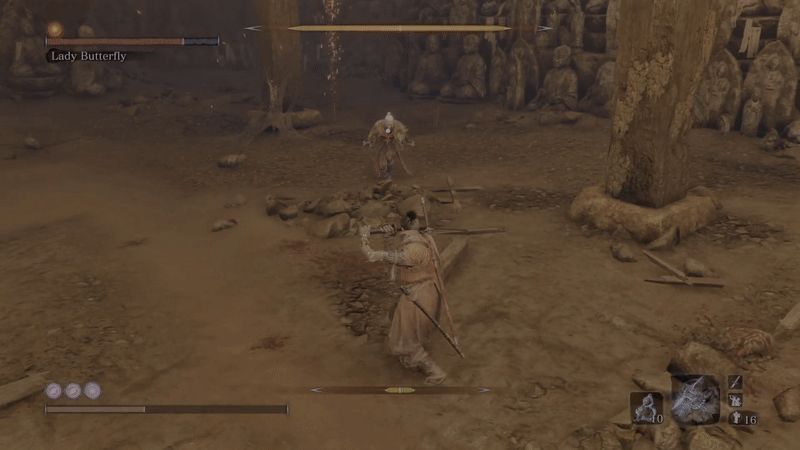
My Lord, I Have Come For You. This… Will Only Take A Moment…
